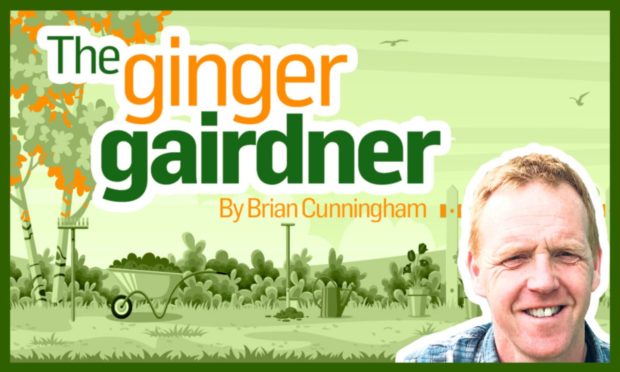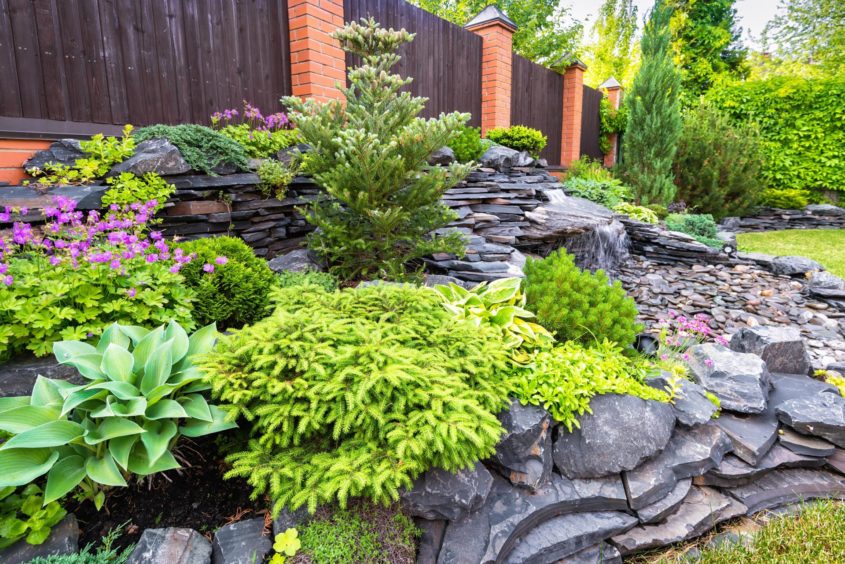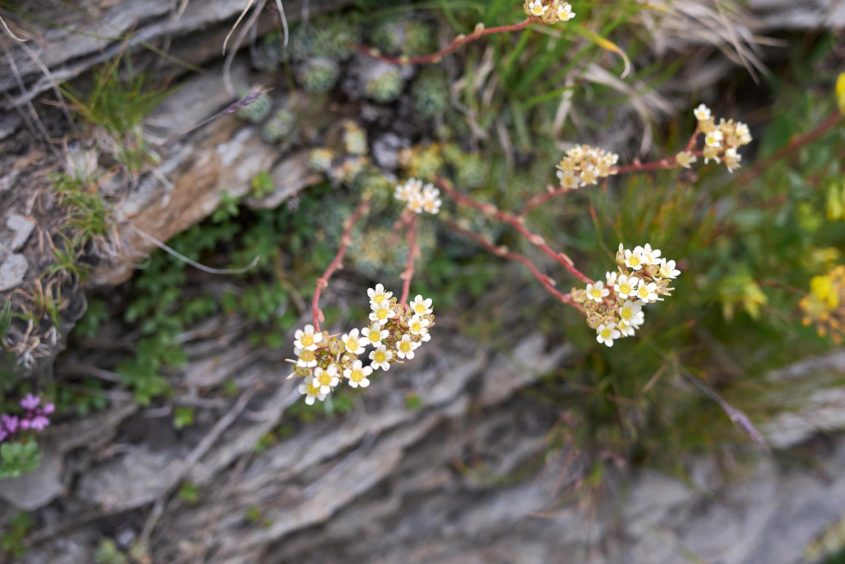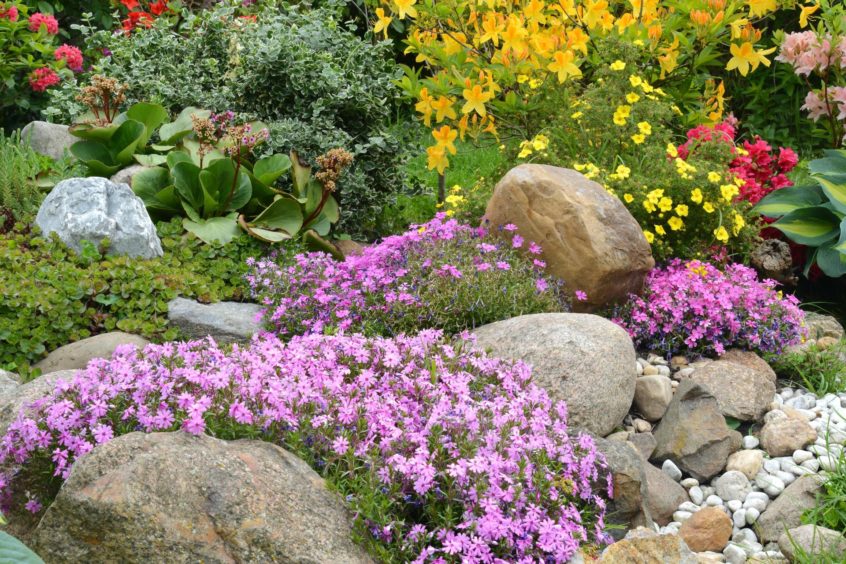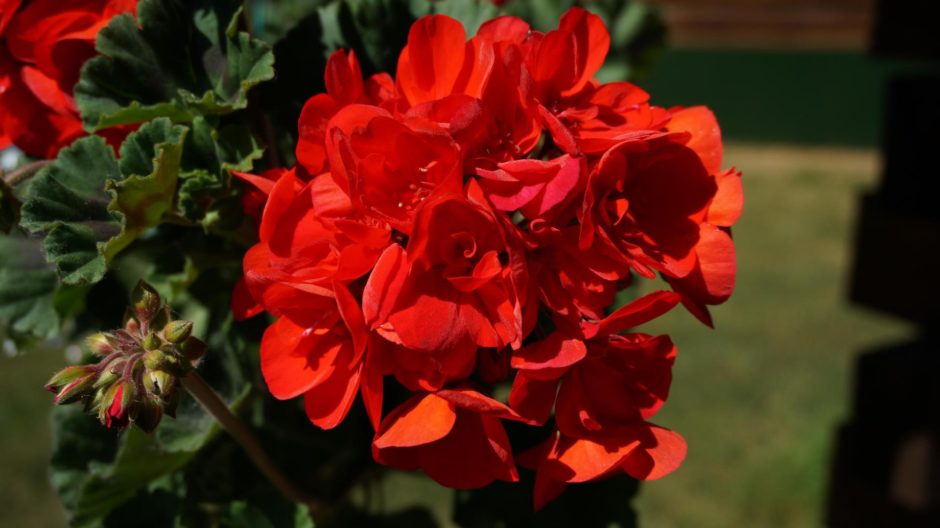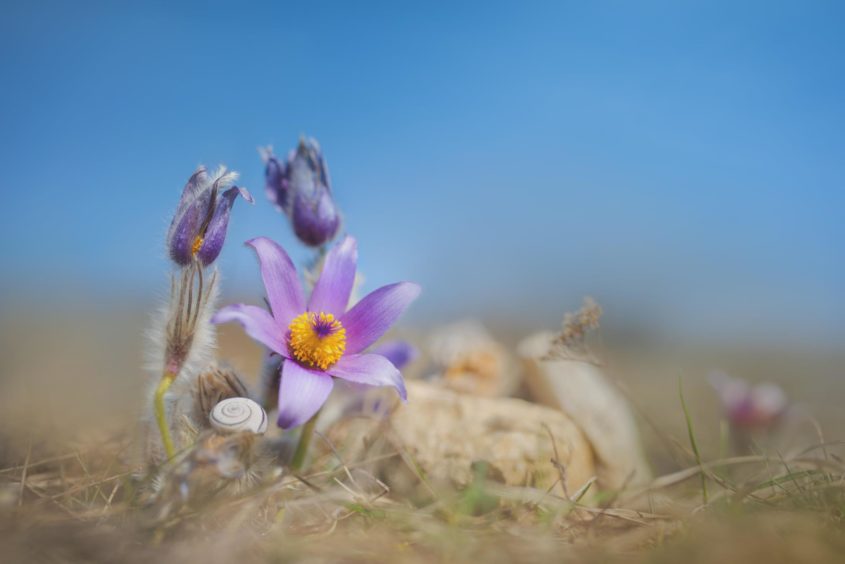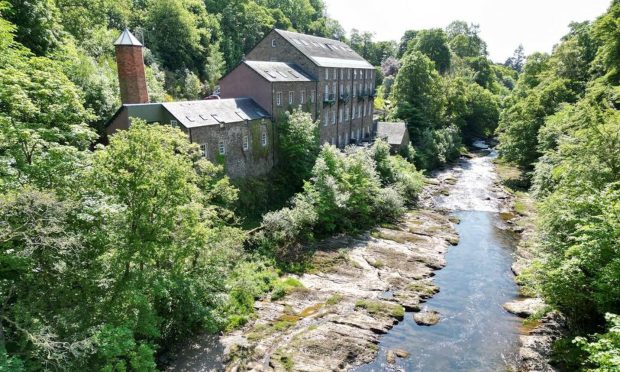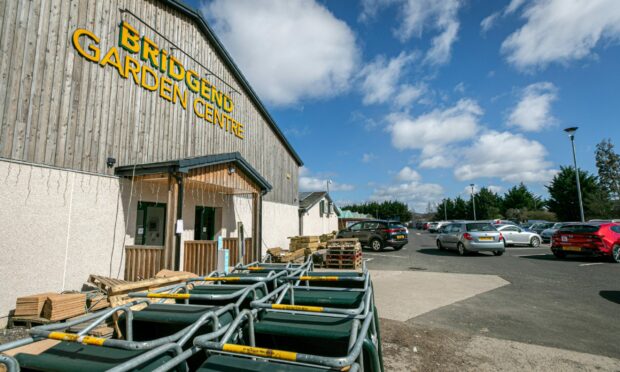I’ve always been drawn to rockeries, rock or alpine gardens as they are also known as.
Although I hadn’t really visited the actual landscapes these are designed to replicate when I started my career in gardening I’d always loved looking at images of mountains, whether it was our Scottish hills here at home or of the peaks of the Alps and Himalayas.
It could also have been the fun of moving soil about and positioning rocks to create a mini mountain range in the garden of my family home, all the way down at the other end of the scale at sea level.
When I got the chance to work in the rock garden at the Royal Botanical Garden in Edinburgh I grabbed it with both hands.
I must admit at that point my decision hadn’t been based on the opportunity to learn about the plants associated with them, I just wanted to be amongst these mounds of soil and large rocks in which valleys and crevices were created, just as you find in the mountains. It was a whole new gardening world to me, and it was so exciting.
Alpine plants, for which a rock garden would be home, are generally those found growing above the tree line in their natural environment.
Conditions are tough on the very tops of the mountains and that’s where we will find low growing plants clinging on for dear life as strong winds constantly batter them. Saxifraga, Campanula and Dianthus are just a few examples that are also perfect for the garden situation.
The constant thawing and refreezing found at this level cause the rocks to erode and crumble, creating scree gravel slopes which plants soon make a home in.
That is why, when we are creating a rock or alpine garden at home, we need the soil they are growing in to be free draining so to replicate, as best we can, the conditions these plants would have if growing in the wild.
To achieve this we need our growing mix to be equal parts of soil and grit, whether this is outdoors or after the bug grips and you start growing pots of alpines in a cold and airy greenhouse under cover. Here you would use a soil-based compost of John Innes number 3. The size of grit is 2-6mm, and bags are readily available to buy from garden centres.
This combination allows any excess water to easily drain away after watering or rainfall.
Winter wet can see the end of many an alpine plant, especially as you get more adventurous and grow more of the challenging, specialist rare ones.
One way to help nurture your plants through this is by providing a layer of gravel around the neck of the plant.
How to plant an alpine plant
Normally when we plant we would do so with the top of the rootball being level with or just below that of the soil, but here we would plant up to 2cm or an inch higher, then carefully tuck a layer of gravel underneath and around the plant.
This also has the benefit of helping to suppress any weeds, making this an ideal option for the time-starved gardener. But always remember low maintenance does not mean no maintenance – tidying up work always needs to be done.
I do get that not everyone shares our love and passion for gardening, with many having resorted to covering their once green lawns with a layer of gravel to avoid doing any work in them.
I can’t believe that the spirits of even the most ardent anti-gardener wouldn’t be lifted just a little at the sight of these tough and reliable plants adding a bit of interest and colour to what, to me, are soulless sites.
Continuing down the mountainside we come into areas of wildflower meadows, providing some of the most beautiful of sights I think Mother Nature gives us.
Geraniums, gentians, orchids, Aquilegia and another of my ‘top ten plants for the tight Scotsman’ Pulsatilla grow here providing larger plants to your own rock garden..
The Pasque flower gives so much value, before any leaves appear silky buds emerge from the ground in spring, producing cup-shaped flowers that fully open into flat stars, the ferny foliage that comes after would be enough interest on it’s own, but that too is followed by attractive silvery seed heads giving us weeks of interest.
Come winter time when all is bare, a few dwarf conifers or evergreen domes of Daphne tangutica give our gardens plant structure – but you don’t need greenery with the design and features of the rocks coming in to their own.
Large, raggedy faces of rock look dramatic and cleverly placed stone creating a crevice feature not only provides perfect growing conditions for alpines but can look stylish too.
I’m certainly no trendsetter; I love my corduroy trousers and still have a transistor radio, but even I can see that rock and alpine gardens are soon going to be the next designer’s dream.
